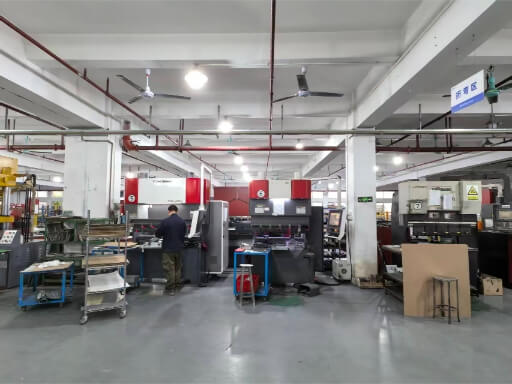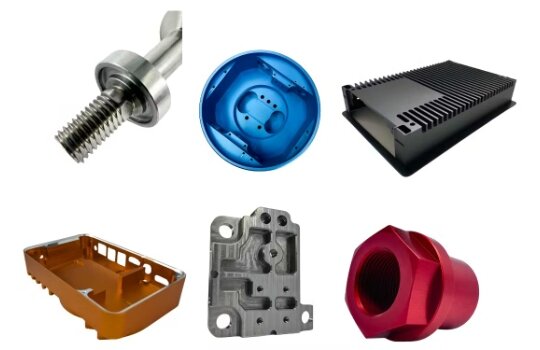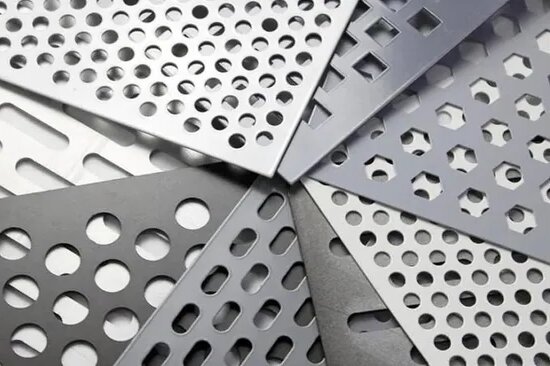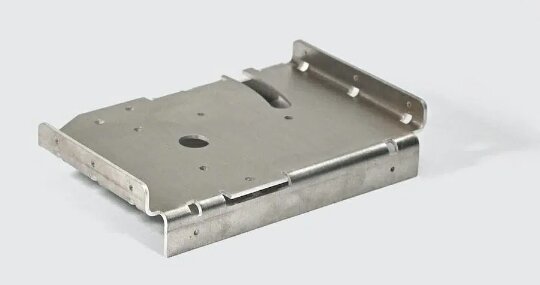In manufacturing, timing is just as important as quality. Delays can slow down product launches, raise costs, and add pressure to teams. Engineers, designers, and purchasing managers continually seek ways to expedite production without compromising quality.
Fast sheet metal fabrication helps solve this problem. It moves projects quickly from design to finished parts. With thoughtful planning, modern machines, and efficient workflows, manufacturers can cut lead times while keeping accuracy and reliability.
Understanding how these processes work makes projects easier to manage and manage effectively. Whether you need prototypes or complete production runs, understanding what affects speed helps you plan more effectively, avoid delays, and receive your parts on time.
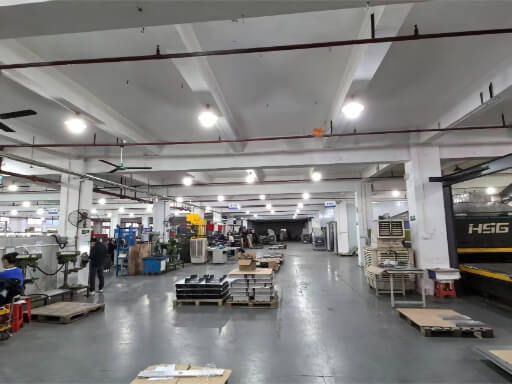
Key Processes That Enable Rapid Fabrication
Speed in sheet metal fabrication depends on how well each process is managed. Every stage, from cutting to bending and forming, affects how quickly and efficiently parts are made.
Laser Cutting for High-Speed Precision
Laserschneiden is one of the fastest and most precise methods for cutting sheet metal. High-powered fiber lasers can slice through materials such as stainless steel, aluminum, and mild steel in mere seconds. The laser follows a programmed path, so switching between designs takes almost no time at all.
CNC-controlled laser systems further accelerate the process. They read digital design files directly, removing the need for manual setup or tool changes. Engineers can start cutting as soon as the design is ready. Nesting software also arranges parts to use material efficiently, which helps reduce waste.
Laser cutting produces clean and smooth edges, so parts need little or no finishing. They can move straight to bending or welding, saving hours in production time. Even for complex shapes or detailed patterns, laser cutting stays accurate at high speeds.
Automated CNC Bending and Punching Systems
Once the sheets are cut, they need to be shaped. Automated CNC bending und punching systems enable this step to be quick and consistent. CNC press brakes can store programs and automatically adjust bending angles. The operator loads the sheet, and the machine turns it to the exact angle every time.
Automation helps remove common human errors. Sensors track pressure and angles to ensure accuracy. Some advanced systems even use robotic arms to move sheets, reducing manual handling and increasing speed.
CNC punching systems work similarly. A turret press can hold multiple tools on one machine. It can punch holes, create notches, and produce embossed features in a single setup. This all-in-one approach reduces the time spent moving parts between machines.
Quick Tool Change and Modular Setup for Flexible Production
In traditional fabrication, changing tools or setting up machines often causes delays. Quick-change tooling systems fix this problem. They let operators switch dies, punches, and forming tools within minutes. This is especially helpful when different parts need to be made quickly.
Modular setups make production even more flexible. Machines can be reconfigured to handle new materials or designs without requiring a complete overhaul. Fixtures and clamps are easy to align, which shortens setup time and improves consistency.
These features are especially valuable for prototypes or small batches. They enable manufacturers to switch between designs quickly while maintaining high precision. This flexibility helps teams react quickly to design changes and deliver finished parts on schedule.
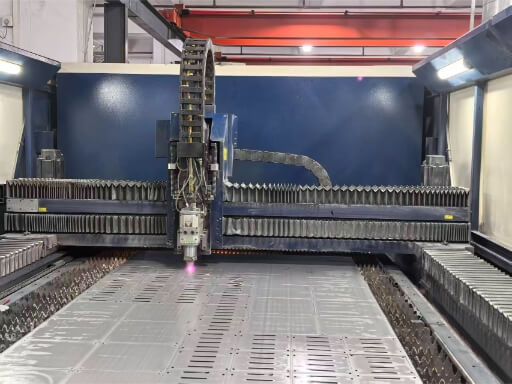
How to Optimize Lead Time from Design to Delivery?
Reducing lead time isn’t just about working faster—it’s about working smarter at every step. Improving how each stage runs helps keep projects on schedule and within budget.
Streamlining Design Files and Engineering Review
A quick fabrication process starts with clear and accurate design files. Engineers use 3D CAD models to verify dimensions, tolerances, and bend radii before production. When files are correctly formatted, they can be sent directly into CNC or laser cutting machines without requiring additional setup.
Poorly prepared files often cause delays. Rework or clarification requests can slow down the entire process. To avoid this, teams conduct Design für Herstellbarkeit (DFM) reviews to ensure that parts are compatible with the factory’s equipment and tooling. This ensures designs can be made efficiently using standard processes.
Good communication between designers and engineers also saves time. Direct discussions help resolve small details—such as hole sizes, bend allowances, or material thickness—right away. This teamwork reduces email back-and-forth and accelerates the transition from design to production.
Efficient Material Selection and Inventory Management
Material choice and availability greatly affect lead time. If the needed metals are already in stock, production can start immediately after design approval. Shops that keep common materials—such as aluminum, stainless steel, and cold-rolled steel—on hand can handle orders much faster.
Choosing standard materials also helps. Using typical sheet thicknesses eliminates the need to wait for special or hard-to-find stock. Engineers should strike a balance between part performance and material availability to prevent unnecessary delays and ensure optimal production.
Innovative inventory systems track material usage and automatically reorder supplies. This ensures popular metals are always available. With this setup, production can move straight from planning to cutting without waiting for deliveries.
Parallel Production and Smart Scheduling
Fast fabrication often uses parallel production instead of a strict step-by-step sequence. Cutting, bending, and finishing can co-occur to maximize the utilization of machines and labor. This ensures parts move smoothly and prevents production bottlenecks.
Intelligent scheduling software helps manage this process. It monitors workloads, machine availability, and delivery deadlines in real-time. By assigning tasks to the best resources, it prevents downtime and maintains a balanced workflow.
Parallel production is beneficial for assemblies with multiple parts. When timelines for each part are aligned, manufacturers can complete and deliver full assemblies more quickly and reliably.
Typical Lead Times for Common Sheet Metal Processes
Lead times can vary depending on the process, part complexity, quantity, and finishing needs. Understanding average timelines helps you plan projects better and communicate clearly with suppliers.
Standard vs. Rush Orders: What to Expect
For standard orders, fabrication usually takes 7 to 15 working days. This includes every stage—design review, cutting, forming, welding, finishing, and inspection. More complex assemblies or large production runs may require longer processing times, especially when multiple surface treatments are involved.
Rush orders are for when parts are needed fast. Many fabrication shops offer express services that deliver prototypes in as little as 2 to 5 days. For small production runs, the schedule can often be shortened to about a week by prioritizing materials and machine time.
Preparation is key to a quick turnaround. Clean and accurate design files, early material confirmation, and prompt replies to engineering questions all help move your job to the front of the queue. When everything is ready upfront, production can start almost immediately.
Factors That Influence Turnaround Time
Several factors influence the time it takes to complete and deliver parts. The most common are design complexity, material availability, equipment capacity, and finishing processes.
Complex designs take more time for setup and inspection. Parts with tight tolerances, many bends, or welds require extra care. Surface treatments, such as powder coating or anodizing, also add time, as each step must be completed in sequence.
Material availability can speed up or slow down a project. Standard materials are typically ready to use, but special alloys or custom thicknesses may require additional sourcing time. Sharing material details early helps avoid waiting later.
Machine capacity also matters. If machines are busy, production might need to wait unless the project is flagged as urgent. Modern scheduling software helps balance workloads and prevent bottlenecks.
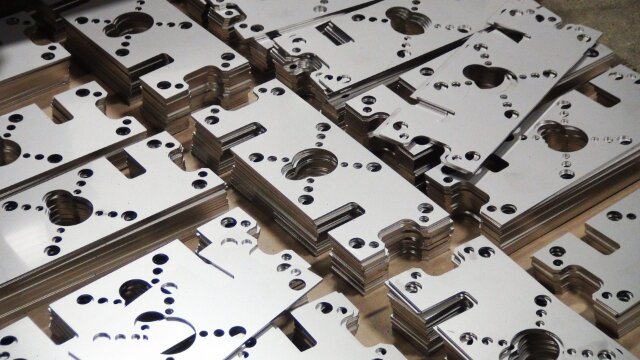
How Shengen Delivers Fast, Reliable Sheet Metal Parts?
Every stage—from quoting to delivery—is designed to minimize waiting time and maintain consistent production. With advanced machines, skilled engineers, and a streamlined workflow, Shengen ensures that each project progresses efficiently from concept to completion.
In-House Equipment and Automated Production Lines
Owning a full range of in-house machines gives Shengen complete control over production. The workshop includes laser cutters, CNC bending machines, stamping presses, and welding stations—all under one roof. This setup removes delays caused by outsourcing or moving parts between suppliers.
Automation is key to maintaining speed. Laser cutters and CNC press brakes are programmed to handle different jobs with little setup time. Tool changes and bending programs are preloaded, allowing operators to switch between tasks in minutes. This flexibility enables a quick turnaround for both prototypes and large orders while maintaining high precision.
Automated scheduling software connects every stage of the production process. It coordinates machines, materials, and operators in real time. Once cutting is finished, bending or welding begins immediately. This seamless flow keeps the production line moving without unnecessary pauses.
Experienced Engineers and Rapid Quotation System
A skilled engineering team stands behind every fast delivery. Shengen’s engineers have deep experience in sheet metal design and manufacturing. They review drawings, confirm manufacturability, and suggest changes that save both time and cost. Early feedback like this prevents design errors and reduces delays later in production.
The quotation process is also built for speed. When a customer uploads a CAD file or drawing, engineers use automated tools to calculate material usage, cutting time, and total cost. This enables accurate quotes to be delivered within hours, rather than days.
Fast quoting enables customers to make informed decisions quickly and efficiently. Once a quote is approved, the same data is directly fed into production planning—eliminating the need for re-entry or manual setup. This digital link between quoting and manufacturing ensures production can start almost immediately.
Proven Workflow from Prototype to Mass Production
Schengen’s workflow is built around consistency and repeatability. It starts with prototype fabrication, where form, fit, and function are tested. Once approved, all parameters are saved digitally, ensuring that production parts match the prototype exactly.
For large-scale production, standardized setups and modular tooling allow the team to scale output fast. Machine settings, bending programs, and welding sequences are consistently reused for every batch, ensuring the same high level of quality across all parts.
Quality control happens at every step—not just at the end. Engineers check dimensions, alignment, and surface finish during production. This continuous inspection prevents errors, reduces rework, and keeps the entire process efficient from start to finish.
Balancing Speed with Other Critical Factors
Fast sheet metal fabrication isn’t just about finishing parts quickly. Actual efficiency comes from balancing speed, quality, and cost through thoughtful planning and strong technical support at every stage.
Ensuring Quality Control at High Velocity
When production runs at a high pace, maintaining consistent quality can be a challenge. Small mistakes can spread quickly if the process isn’t closely watched. That’s why strict quality control is essential in high-speed fabrication.
Engineers utilize digital inspection tools and automated measuring systems to promptly identify issues. Inline inspection—performed during cutting, bending, and welding—ensures that each part meets dimensional and tolerance standards before proceeding to the next step. This real-time feedback prevents defects, reduces waste, and avoids delays later in the production process.
Standardized programs also help maintain accuracy. Machines utilize preset settings for repeat jobs, ensuring consistent output even at high speeds. Operators verify calibration before each run, and quality teams perform regular checks to ensure results stay within spec.
Communication is just as important as equipment. Engineers, operators, and quality staff collaborate to identify and resolve issues before they impact production. This teamwork ensures that speed and precision always go hand in hand.
Cost Considerations for Expedited Services
Fast delivery often comes with added costs. Rush orders may need priority scheduling, overtime work, or dedicated machine time. These steps increase production expenses, but they’re often worth it to meet tight deadlines or avoid lost business opportunities.
To manage costs effectively, planning is crucial. Customers who provide forecasts or place orders in batches can often secure better pricing while maintaining short lead times. Flexible scheduling helps balance workloads, reducing the need for overtime or sudden setup changes.
Material selection also influences cost. Choosing metals that are already in stock and utilizing standard sheet sizes helps avoid sourcing delays and additional charges. Engineers can suggest suitable alternatives that meet strength and finish requirements while being faster and more affordable to produce.
Get Your Parts Faster with Shengen
Fast sheet metal fabrication starts long before the first cut—it begins with how well your project is prepared. When your drawings, materials, and specifications are clear from the start, the quoting and production process moves much faster. Shengen’s goal is to help customers save time at every stage, from design submission to final delivery.
The more complete and accurate your design files are, the quicker engineers can prepare a quote. Submitting 3D CAD files in formats such as STEP, IGES, or DXF allows automated tools to read part geometry immediately. Be sure to include details such as material type, surface finish, and quantity so that engineers can calculate pricing and lead time correctly.
Adding a short note about the part’s function or critical dimensions also helps. It enables engineers to identify potential manufacturing challenges early, such as tight bends or unusual hole patterns. If you already know your preferred tolerance range, include it as well—it reduces review time and prevents unnecessary revisions later.
Need your parts fast? Upload your drawings and requirements today to get a rapid quote from Shengen’s engineering team. Our experts will review your design, confirm manufacturability, and send a detailed cost estimate within hours—so your project can move into production without delay.
Hey, ich bin Kevin Lee

In den letzten 10 Jahren bin ich in verschiedene Formen der Blechbearbeitung eingetaucht und teile hier coole Erkenntnisse aus meinen Erfahrungen in verschiedenen Werkstätten.
Kontakt aufnehmen

Kevin Lee
Ich verfüge über mehr als zehn Jahre Berufserfahrung in der Blechverarbeitung und bin auf Laserschneiden, Biegen, Schweißen und Oberflächenbehandlungstechniken spezialisiert. Als Technischer Direktor bei Shengen bin ich bestrebt, komplexe Fertigungsherausforderungen zu lösen und Innovation und Qualität in jedem Projekt voranzutreiben.

